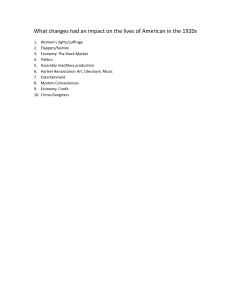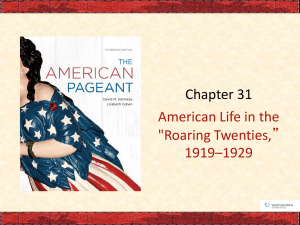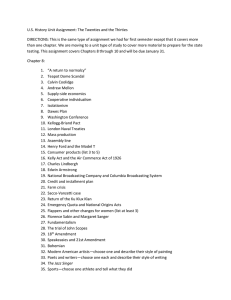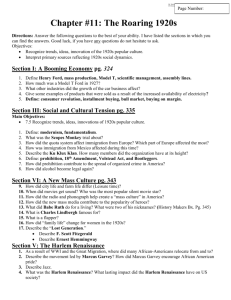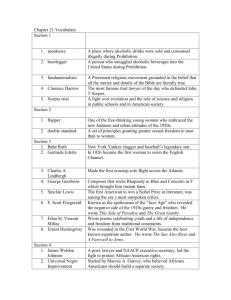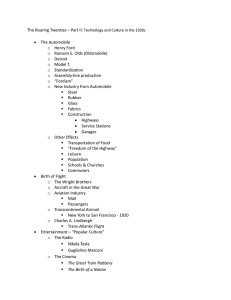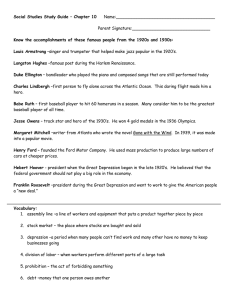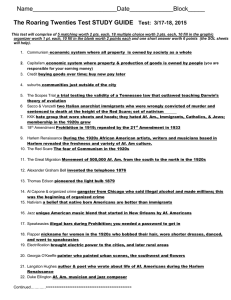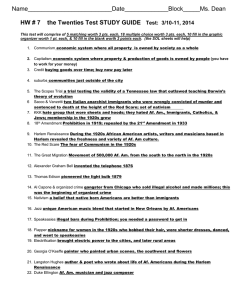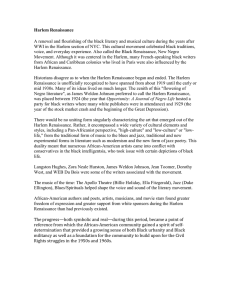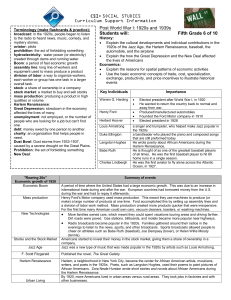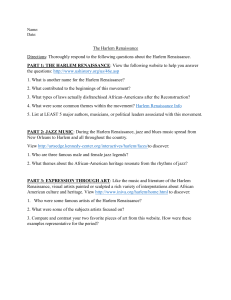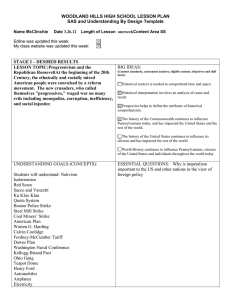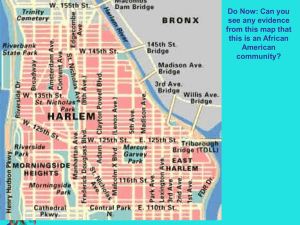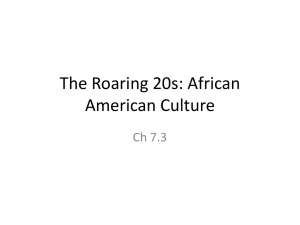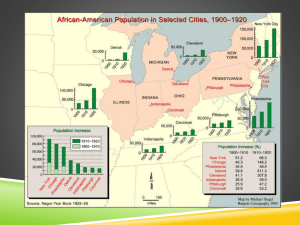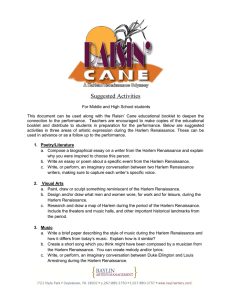The 1920s
advertisement
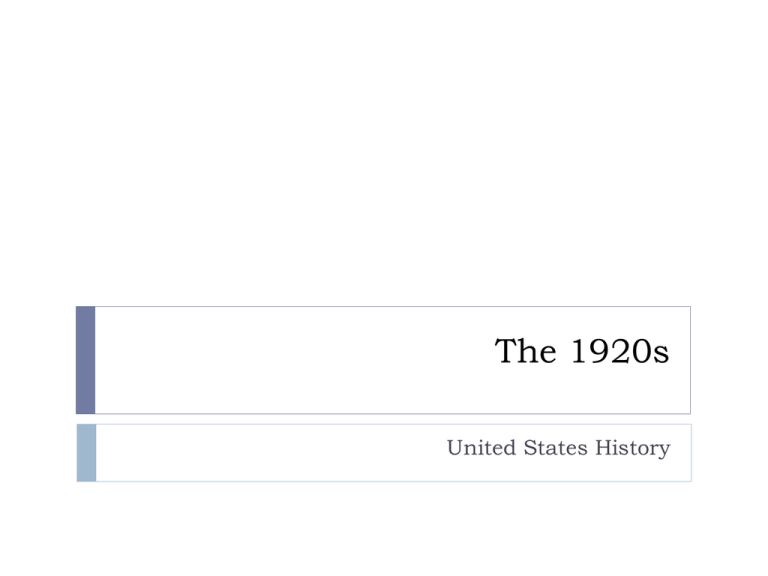
The 1920s United States History Politics of the 1920s Warren G. Harding Ohio Gang Calvin Coolidge Teapot Dome Scandal Andrew Mellon Supply-Side Economics Herbert Hoover Isolationism Dawes Plan Kellogg-Briand Pact Washington Conference New Industrial America Henry Ford Mass Advertising Mass Production Managerial System Consumer Economy Welfare Capitalism Charles Lindbergh Open Shop Radio Industry Consumer Credit Cultural Values Sacco-Vanzetti Fundamentalism New Ku Klux Klan Evolution v. Creationism Emergency Quota Act (1921) Scopes Trial National Origins Act (1924) Prohibition Speakeasies Roles of Women Bootleggers Cultural Movements Modern Art Influence of Europe Songwriters Poets and Writers Varying Styles “Disillusionment w/ war” “Society’s Superficiality” “Ignorance of classes” Tin Pan Alley Radio Broadcasts Role of Mass Media Unification through shared ideas/attitudes Sports New Technologies Talkies The Jazz Singer (1927) African American Culture Impact of Great Migration Harlem Renaissance Harlem Renaissance Writers Claude McKay (Proud Defiance/Hatred of Racism) Langston Hughes Zora Neale Hurston Painting Historical Roots Shared Identity Culture Jazz & Blues Dixieland blues and ragtime Rhythms & Beats Louis Armstrong Duke Ellington Cotton Club Theater Apollo Theater “Shuffle Along” (1921) African American Politics Voting Impact NAACP Oscar DePriest (Chicago) Battled against segregation Marcus Garvey’s “Black Nationalism” UNIA: Universal Negro Improvement Association Black culture and tradition, separation from white society Middle-class and Intellectuals distanced selves from Garvey Alienated Harlem Renaissance figures as “weak-kneed” to white society

